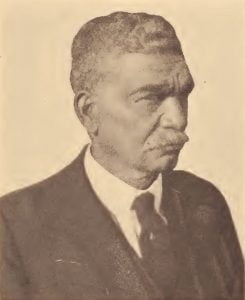The largest group of descendants of the more southerly Powhatan tribes is that which comprises the Nansemond. They reside at Portsmouth, Bowers Hill, near Suffolk, and in general about Dismal Swamp. Their name has hardly disappeared from the pages of history for more than a few years at a time. Captain John Smith gave them a place of prominence in his narrative, and a number of entries since his day in literature connect them closely with the past. In the last century they have lapsed in numbers and strength through mixture and dispersion, yet the number of those considered as Nansemond descendants must be about 200, according to J. L. Bass, their present chief. From William W. Weaver and Mr. Bass in 1907 Mooney recorded some information which he published. 1 He noted that the men were mostly engaged in truck-farming and as sailors and that they numbered about 180. According to most recent information, in March 1923, the descendants organized a Nansemond Indian Association with 58 enrolled members to cooperate with the other organized bodies of Indians in the state. Their principal family names are Bass (fig. 37) and Weaver, from whom are descended others: Bateman, Bond, Brady, Bright, Cable, Collins, Craigins, Gaylord, Gray, Green, Harmon, Holloway, Howard, Jones, Okay, Osborn, Porter, Price, Rowland, Sawyer, Scott, Sebastian, Simcoe, White, Wilkins, and Williams.

I might add that a detailed study of the Nansemond Tribe History is to be awaited with some interest. Until this is made one can only entertain a suspicion of the likelihood of some ethnological divergence from the Pamunkey and Mattaponi pattern, since the Nansemond are on the border of the North Carolina coast Algonquian sub-area.
It may not be out of place to note that among the ethnological survivals here to be investigated the Nansemond preserve interesting information on bear-hunting, which is still pursued in Dismal Swamp, and wolf-trapping, of which tradition has something to reveal. They also offer the usual amount of surviving agricultural lore, and some other topics under material culture, connected with hunting, fishing, and the use of dugout canoes. The latter are still to be found in their possession.
Citations:
- Mooney, James, The Powhatan Confederacy Past and Present, Amer. Anthr., vol. ix, no. 1, 1907, p. 150[
]
